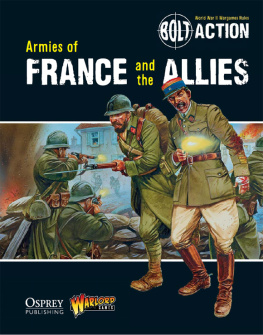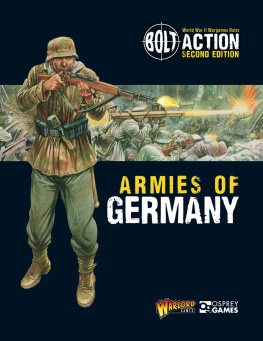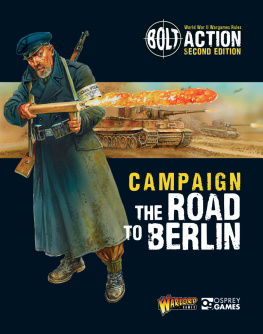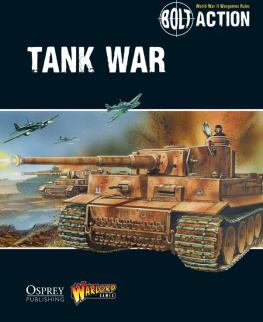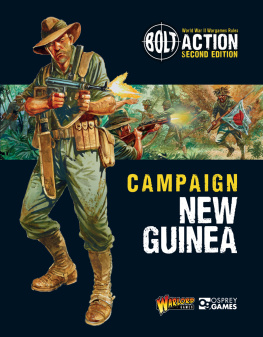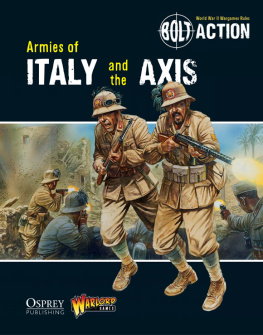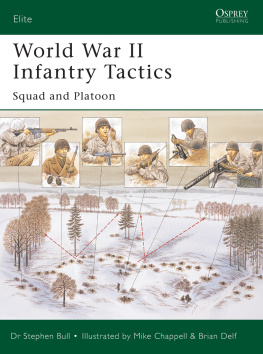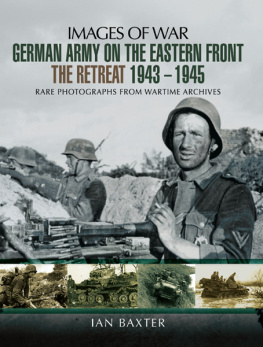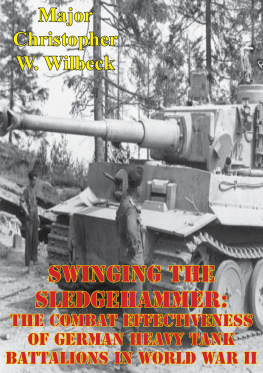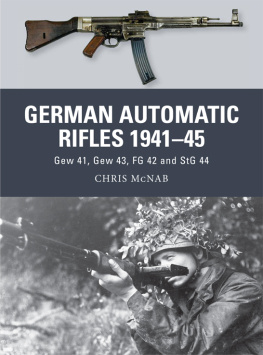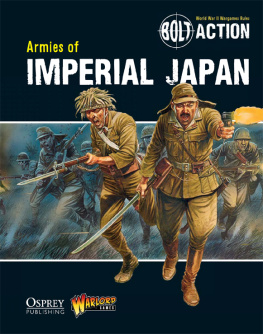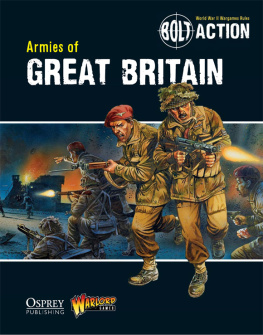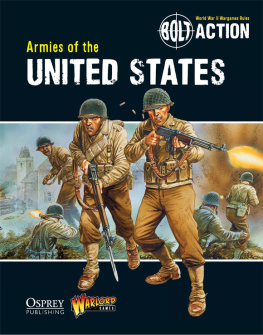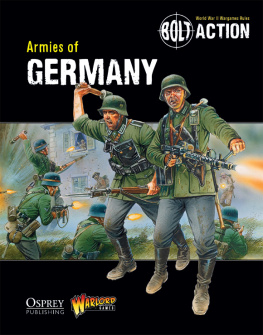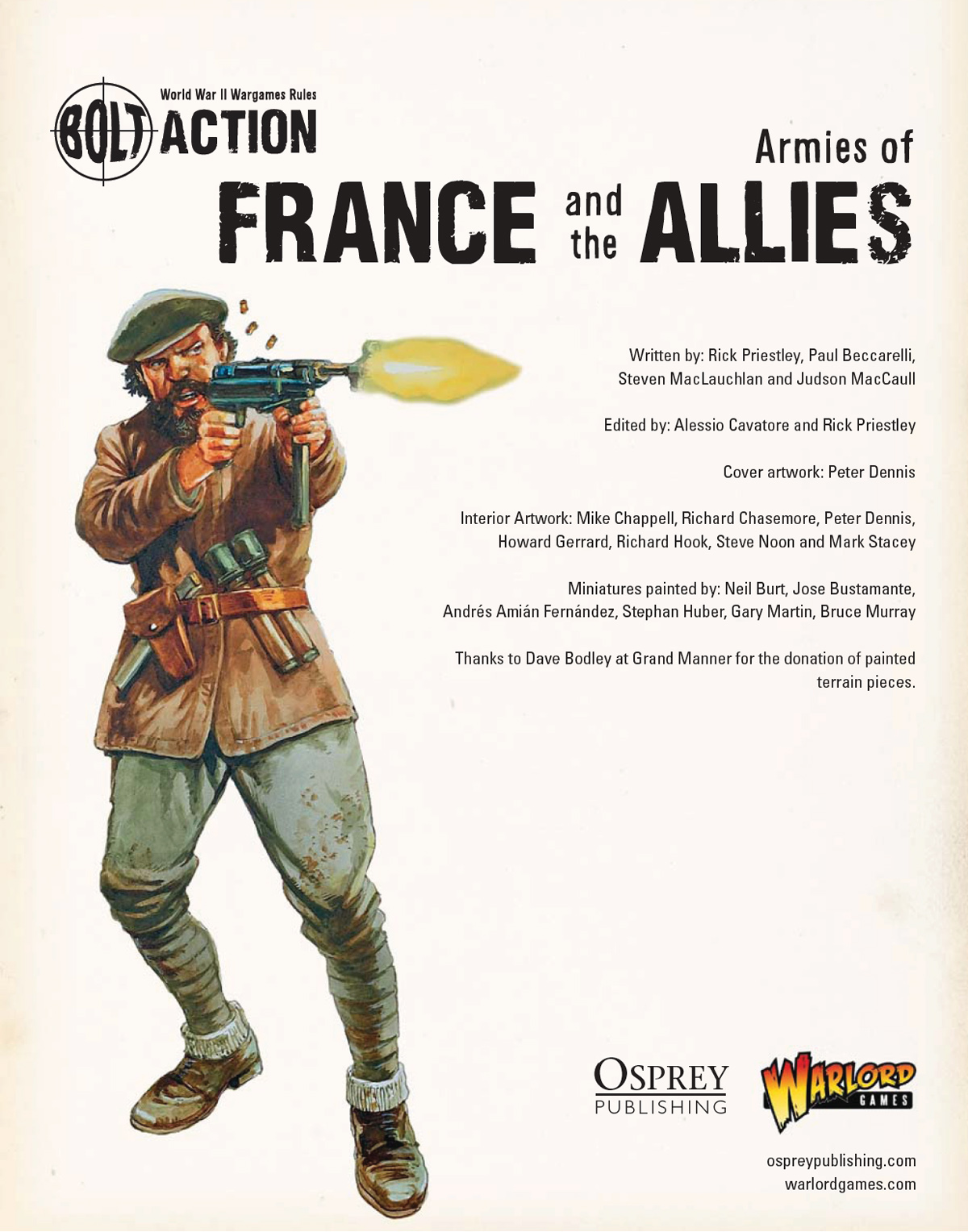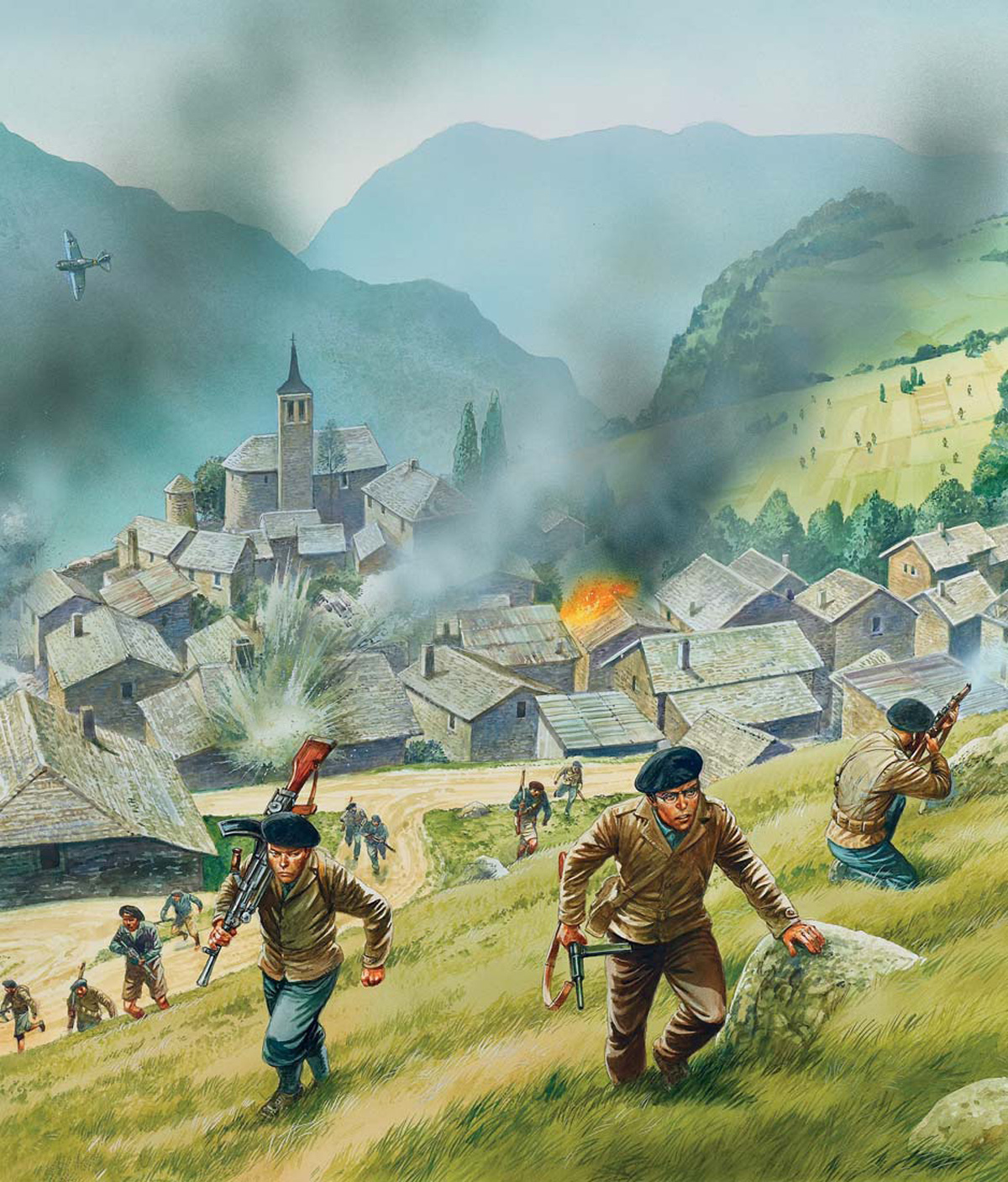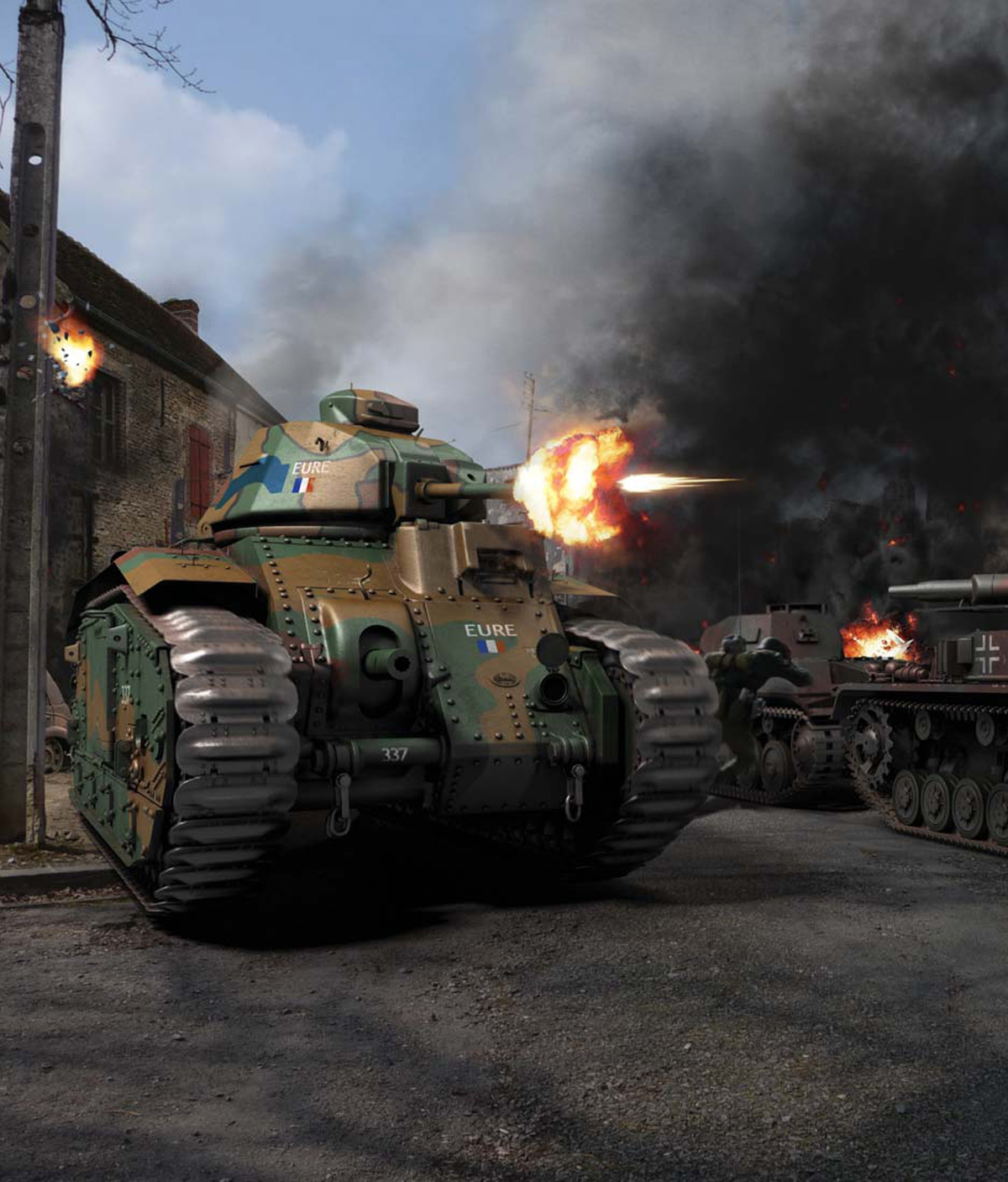CONTENTS
WHAT IS THIS BOOK?
French Maquis skirmishing at Montgirod, 14 August 1944, by Peter Dennis Osprey Publishing Ltd. Taken from Campaign 249: Vercors 1944
T his book is a supplement for the Bolt Action World War II tabletop wargame. It contains all the background, rules and army list information need to field a French, Belgian, Dutch, Polish, Norwegian, Greek or Partisan army in the Bolt Action game. Inside youll find details of the organisation and equipment used by these diverse forces during their battle against the German and other Axis armies.
The book is divided into separate sections, each dealing with a separate army, and each with its own Army List. This provides all the information needed to field that army in your games. All the major weapons, guns and where appropriate vehicles are covered, together with a selection of troop types of varying quality.
Alongside each list is at least one Theatre Selector, which gives the forces available for a particular campaign, theatre or phase of the war. In the case of a few of the armies covered by this book the theatres are somewhat limited compared to those available for major combatants such as the British and Germans. This reflects the historical battles fought by these armies as well as the requirement to cover a number of armies all in one book.
Some weapons are common to more than one army covered by this book, and rather than repeat an entry needlessly we instead reference the earliest entry. For example, the French FT tank was used by several nations covered by this list. In the case of the Partisan list, we allow a force to include vehicles captured from the Germans or Italians, and players who wish to take advantage of this will need a copy of the relevant Bolt Action supplements.
Where possible we have tried to provide rules for tanks and armoured cars that were available, even if only very few were present and their use either extremely limited or disputed. However, in the case of some forces and in particular the partisans and KNIL Dutch it is impossible to be definitive and we have instead aimed to provide a representative selection.
Our aim has been to try and create playable armies that can hold their own against their historical opponents and which can be used to play games of a more general nature, taking on different armies from different campaigns or time periods should the players wish to do so. In some cases, in particular the Norwegians and early Partisans, this is quite a challenge! In reality, some of the armies covered by this book were token and scratch forces that could not hope to overcome the large and well-equipped German Army. On a tactical level the kind of level represented by our games things were more equal. Often, desperate and innovative defenders were able to defeat the opposition if only for a while. Nevertheless it would be optimistic to imagine an early war Partisan force could hope to take on a late-war German field force with heavy tanks, or that Norwegians with their limited arsenal could confront a late-war Russian heavy tank head-on.
The brave Poles fighting on two fronts
FRANCE
Char B1 bis at Stonne, by Richard Chasemore Osprey Publishing Ltd. Taken from Duel 33: Panzer IV vs Char B1 bis
The German invasion and blitzkrieg, known as The Battle of France, was one of the critical campaigns of World War II. The previous months had seen little serious fighting in the west. This so-called Phoney War was characterised by a lack of activity by either side. Of course, from a soldiers point of view there was nothing inactive about the Saar offensive that saw French armies briefly advance onto German soil, or about the patrols and raids that took place in the region between the mighty Maginot Line and Siegfried defences. Similarly, France sent troops to aid the Norwegians in their struggle against the German invasion, one of the most hard-fought campaigns of the early war. Yet all this would pale into insignificance in May 1940.
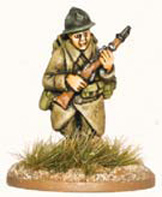
The German attack through the Ardennes was a masterpiece of modern strategy that exposed the weakness of the Allied position. None the less there was much fierce fighting before the armistice of 22 June and the Germans did not have it all their own way. The main thrust of the Panzers was initially held by the 55th Infantry Division the 55e DI which fought stubbornly in defence of Sedan despite being rated a B or reserve formation. Relentless German aerial bombardment turned the tide, disrupting the deployment of French artillery and communications, so that the 55e, believing itself isolated, began to crumble. German Panzers thrust westwards, punching a hole through the Allied armies. A French blocking move by the 1st Armoured Division (Ist DCR) was thwarted when the rapidly advancing enemy caught its heavy Char B tanks refuelling, scattering the French tank force. De Gaulle, in command of the hastily assembled 4th Armoured Division, scored some localised success much to his credit but his efforts failed to halt the German advance for long.
The Allies had but one chance, and that was to attack the German thrust from north and south, cutting off the Panzers and isolating them before the Germans could push their infantry forward into support. This plan, the Waygard plan, named after the new French commander, though feasible in theory, failed because the Allied forces were already too weak to successfully execute it. In the north, the resulting Battle of Arras badly frightened Erwin Rommel, the commander of 7th Panzer, but by hastily reorganising 88mm Flak guns and 105mm artillery pieces to form a defensive line the Germans were able to contain the counterattack. Further attacks by the French from the south failed to recapture Amiens. By the final week in May the British were in retreat towards Dunkirk, and a sense of defeat had begun to overtake the French command. All the time the British retreated, fresh formations were arriving in France some were to be evacuated only days after setting foot on French soil.
Large numbers of Allied troops were rescued from the beaches of Dunkirk, largely thanks to the efforts of the 1st French Army, which fought a tenacious rearguard action. Approximately 340,000 men escaped from the German encirclement amongst them 140,000 French troops, including men who would provide the core of De Gaulles Free French Army. By the time the Germans were rested and ready to advance towards Paris the French collapse was all but complete. By 16 June the new government, led by Philippe Petain, 84 year old hero of World War I, began negotiations for an armistice.
Although France had been defeated this did not mean that French troops were to play no further part in the war. From exile in Britain, De Gaulle, the leader of the Free French, built up his forces and prepared to continue the fight. The Free French were initially equipped by the British and later by the Americans and were, to all intents, parts of those armies using the same equipment and tactics as other Allied nations. On the other hand, the region of the country that remained free of direct German control, Vichy France, while ostensibly neutral, continued to take an active part in the war, supporting the German war effort under an official policy of collaboration. This resulted in clashes between Allied and French troops in French colonies, and even between Free French and Vichy French forces in the SyriaLebanese campaign. These battles were as hard fought as any of the war. French troops opposed the British in Madagascar, and even if briefly defended French Indochina against the Japanese. The battles against the Americans and British during the

